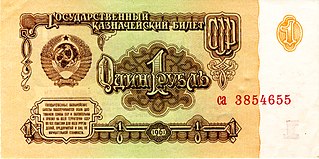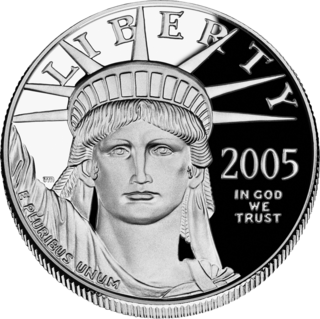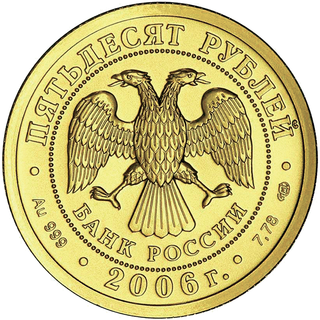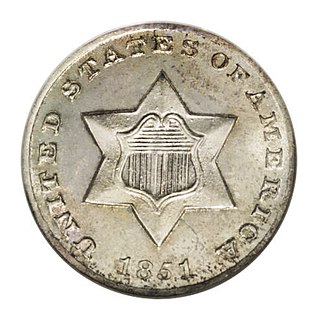Coins of the United States dollar were first minted in 1792. New coins have been produced annually and they make up a valuable aspect of the United States currency system. Today, circulating coins exist in denominations of 1¢, 5¢, 10¢, 25¢, 50¢, and $1.00. Also minted are bullion and commemorative coins. All of these are produced by the United States Mint. The coins are then sold to Federal Reserve Banks which in turn are responsible for putting coins into circulation and withdrawing them as demanded by the country's economy.

Precious metals are rare, naturally occurring metallic chemical elements of high economic value. Chemically, the precious metals tend to be less reactive than most elements. They are usually ductile and have a high lustre. Historically, precious metals were important as currency but are now regarded mainly as investment and industrial commodities. Gold, silver, platinum, and palladium each have an ISO 4217 currency code.

The Coinage Act of 1873 or Mint Act of 1873, was a general revision of laws relating to the Mint of the United States. By ending the right of holders of silver bullion to have it coined into standard silver dollars, while allowing holders of gold to continue to have their bullion made into money, the act created a gold standard by default. It also authorized a Trade dollar, with limited legal tender, intended for export, mainly to Asia, and abolished three small-denomination coins. The act led to controversial results and was denounced by critics as the "Crime of '73".

The Russian ruble or rouble is the official currency of the Russian Federation. The ruble is subdivided into 100 kopeks. The first Russian ruble replaced the Soviet ruble in September 1993 at parity or 1 SUR = 1 RUR. In 1998, preceding the financial crisis, the current ruble was redenominated with the new code "RUB" and was exchanged at the rate of 1 RUB = 1,000 RUR.

The Soviet ruble was the currency of the Union of Soviet Socialist Republics (USSR), introduced in 1922, replacing the Imperial Russian ruble. One ruble was divided into 100 kopeks. Soviet ruble banknotes and coins were produced by the Federal State Unitary Enterprise in Moscow and Leningrad.

The ruble or rouble is the currency unit of Russia and some states in Eastern Europe closely associated with the economy of Russia. As of 2022, the three variants of rubles in circulation are—the Russian ruble in Russia, Abkhazia and South Ossetia, the Belarusian ruble in Belarus and the unrecognised Transnistrian ruble in Transnistria.
Silver coins are possibly the oldest mass-produced form of coinage. Silver has been used as a coinage metal since the times of the Greeks; their silver drachmas were popular trade coins. The ancient Persians used silver coins between 612–330 BC. Before 1797, British pennies were made of silver.

Platinum coins are a form of currency. Platinum has an international currency symbol under ISO 4217 of XPT. The issues of legitimate platinum coins were initiated by Spain in Spanish-colonized America in the 18th century and continued by the Russian Empire in the 19th century. As a form of currency, these coins proved to be impractical: platinum resembles many less expensive metals, and, unlike the more malleable and ductile silver and gold, it is very difficult to work. Several commemorative coin sets have been issued starting from 1978 and became popular among coin collectors. The major platinum bullion coins include the American Platinum Eagle, the Canadian Platinum Maple Leaf, the Australian Platinum Koala, the Isle of Man Noble, the Chinese Platinum Panda, the Austrian Vienna Philharmonic and several series by the Soviet Union and later by the Russian Federation.

Count Georg Ludwig Cancrin was a Russian German aristocrat and as a politician best known for spearheading reforms in the Russian financial system early in the 19th century.

A denga was a Russian monetary unit with a value latterly equal to ½ kopek.
Chervonets is the traditional Russian name for large foreign, and domestic gold coins. The name comes from the Russian term "червонное золото", meaning “red gold" – the old name of a high-grade gold type.

Altyn is a historical Russian currency. The name in Tatar is altı (алты) meaning "six", since it was worth 6 dengas, equivalent to three kopek silver, then copper, a small value coin, or 180–206 copper puls.

The United States dollar is the official currency of the United States and several other countries. The Coinage Act of 1792 introduced the U.S. dollar at par with the Spanish silver dollar, divided it into 100 cents, and authorized the minting of coins denominated in dollars and cents. U.S. banknotes are issued in the form of Federal Reserve Notes, popularly called greenbacks due to their predominantly green color.

The Constantine ruble is a rare silver coin of the Russian Empire bearing the profile of Constantine, the brother of emperors Alexander I and Nicholas I. It was prepared to be manufactured at the Saint Petersburg Mint during the brief Interregnum of 1825 but has never been minted in numbers and never circulated in public. The fact of its existence, classified in Russia until 1886, leaked into European press in 1857.

The Russian George the Victorious is a bullion coin issued in gold and silver by the Central Bank of Russia. The 1⁄4 troy ounce gold coins have a face value of 50 rubles and have been minted since 2006. The silver coins are Russia's first bullion coins in that metal; they have a face value of 3 rubles and have been minted since 2009.

The three-cent silver, also known as the three-cent piece in silver or trime, was struck by the Mint of the United States for circulation from 1851 to 1872, and as a proof coin in 1873. Designed by the Mint's chief engraver, James B. Longacre, it circulated well while other silver coinage was being hoarded and melted, but once that problem was addressed, became less used. It was abolished by Congress with the Coinage Act of 1873.

The Coinage Act of 1853, 10 Stat. 160, was a piece of legislation passed by the United States Congress which lowered the silver content of the silver half dime, dime, quarter dollar, and half dollar, and authorized a three dollar gold piece. Although intending to stabilize the country's silver shortage, it, in effect, pushed the United States closer to abandoning bimetallism entirely and adopting the gold standard.

The kopek or kopeck is or was a coin or a currency unit of a number of countries in Eastern Europe closely associated with the economy of Russia. It is usually the smallest denomination within a currency system; 100 kopeks are worth 1 ruble or 1 hryvnia.
The Soviet Union minted a series of commemorative platinum coins from 1977 to 1991.
The Russian Federation issued 16 platinum coins starting from 1992, with the face value (weight) of 25, 50 and 150 rubles. Minting was suspended in 1996, with the last coin of 150 rubles dedicated to the 1240 Battle of the Neva.



















